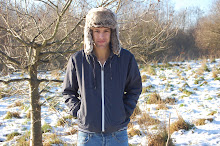
"I am a mathematician. I would like to stand on your roof"
Ron Eglash explores basic geometrical algorithm's to explore natural patterns. I have provided the link to a really facinating lecture, particularly Eglash's look at African culture and design. The mathamatic organising properties of culture is something i'm really going to try and learn more about throughout this research:
Click here for the video of the lecture
Click here for Ron Eglash's website with many of his Culturally-situated design tools
Click here for Ron Eglash's 'virtual breakdancer', which maps rotation and sine functions onto breakdancing

